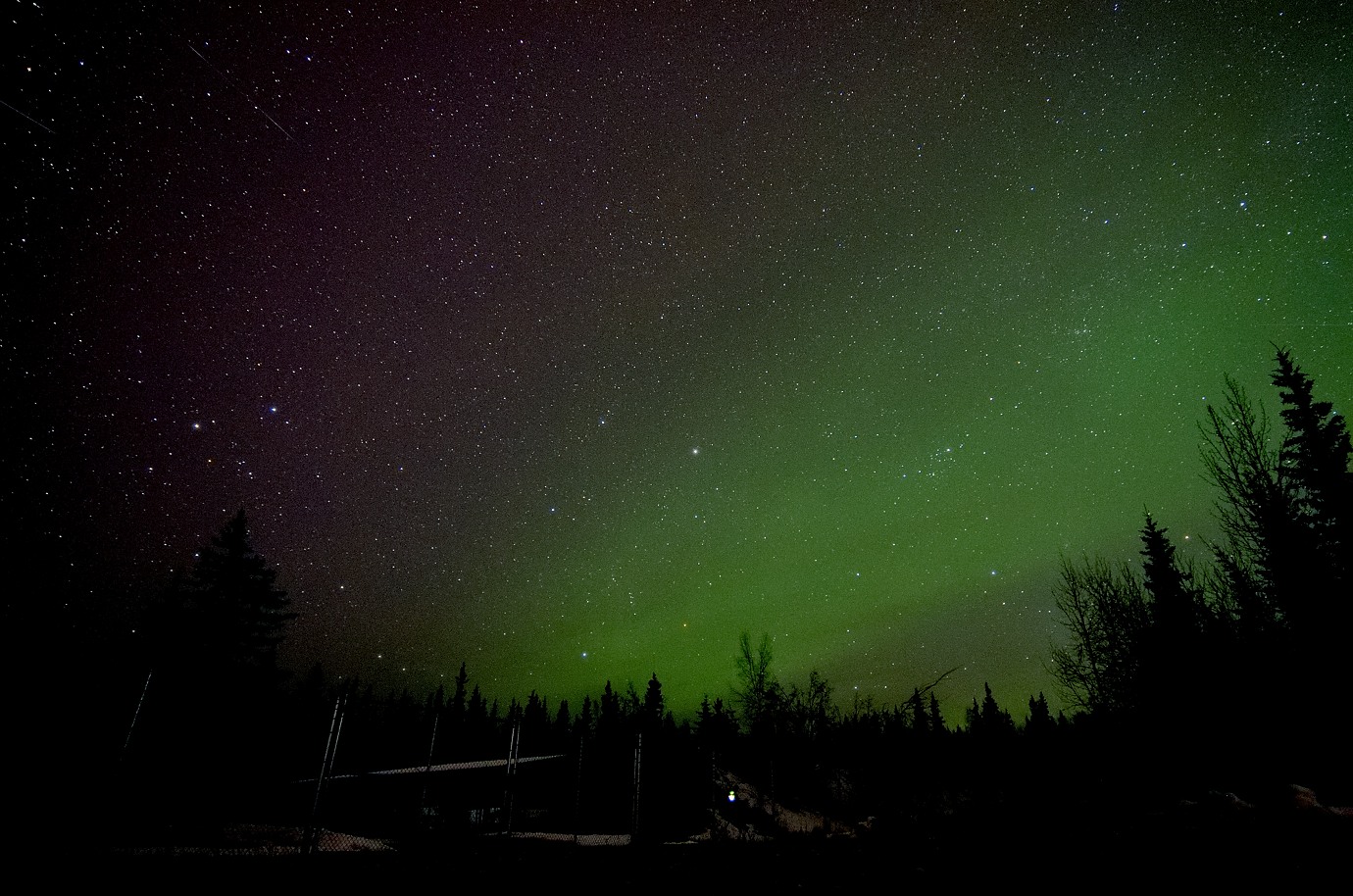First sucess on Pinwheel galaxy - M101Finally I got in >2 hours of imaging time (red zone) on another galaxy, M 101, the Pinwheel Galaxy, resulting in 110 exposure totaling ca 1 hour 50 minutes of usable frames (60s exposures at ISO 1600, D7100/AFS 300mm f/4 E PF @ f/4.5 on Skytracker) before aurora took over. Stacked in DSS using 2x drizzle - the image is a little less than half the width of the original frame.
I wonder what the "cloud" in the lower left of the frame is, could it be another galaxy/nebula or is it some kind of flare/ghost artifact? I could not find anything like it at that location in Stellarium (best viewed large).
[
Edit: A quick reponse from Russ (RustierOne) at DPreview identified it as "spiral galaxy NGC 5474, magnitude 10.8, 4.7' x 4.7', 22 million lightyears distant." He also mentioned that I caught "another galaxy at about the 10 o'clock position from M101 - its NGC 5477, magnitude 14.0, 1,6 ' x 1.3' ".]
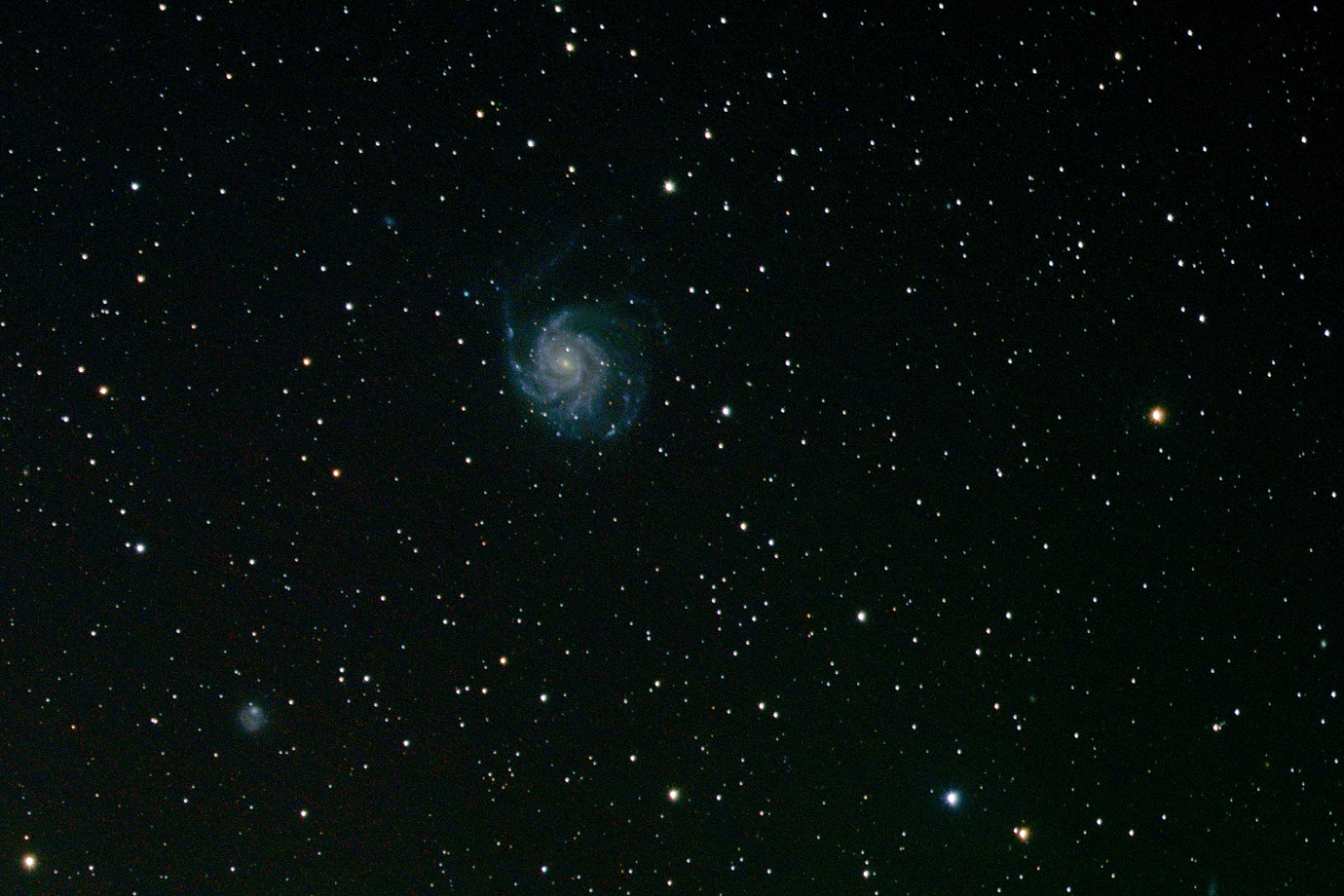
M 101 with AFS 300mm f/4 E PF @ f/4.5 on Skytracker, 60s exposures, 110 used.
My first attempt at M101 a week before was not successful, but I sort of like the result

. Strangely, none of the single frames that were stacked have such a pronounced auroral pattern before stacking.
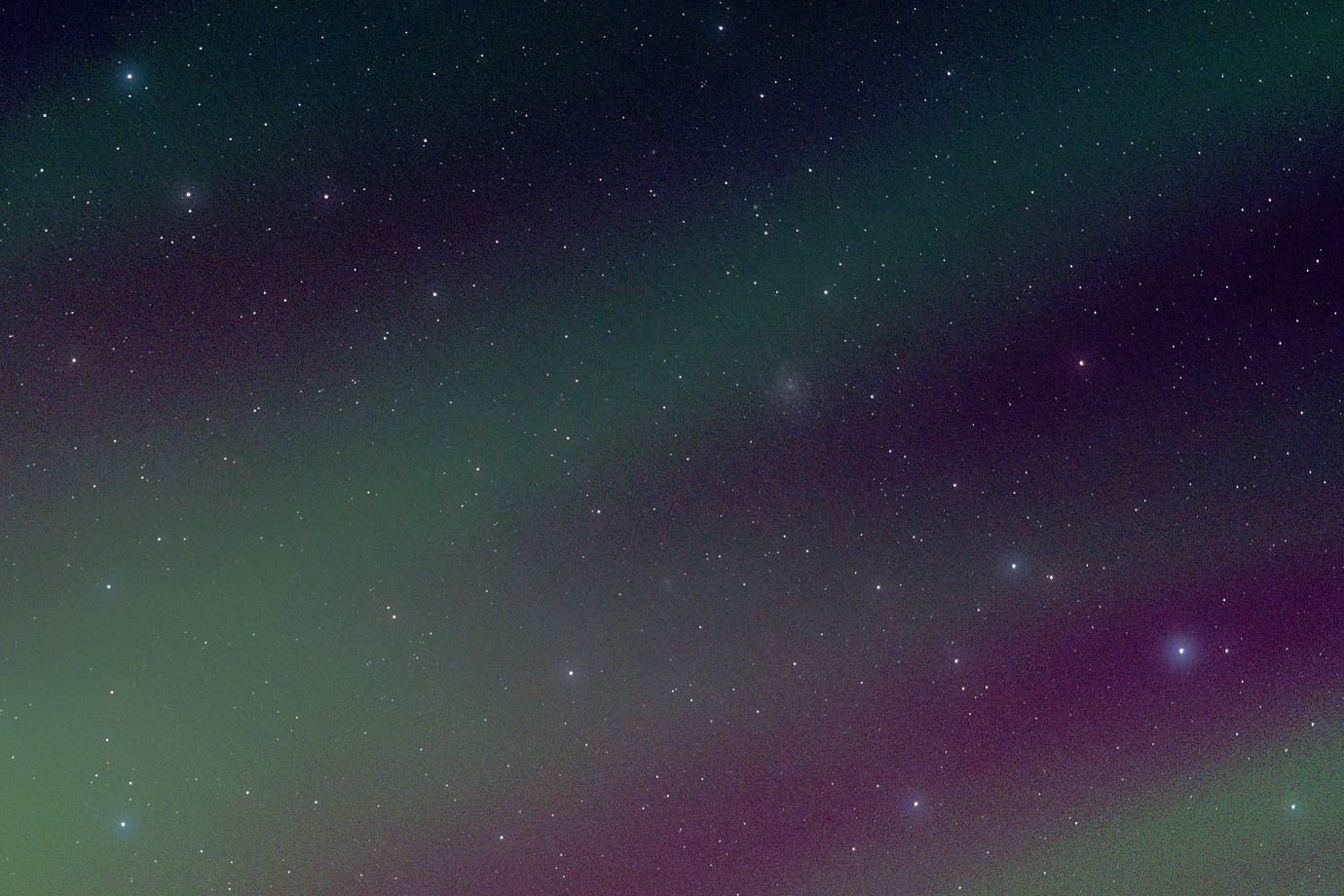
M 101 buried in aurora with AFS 300mm f/4 E PF @ f/4.5 on Skytracker, ca. 40 30s exposures used, most of the frame.
I also got another go one the Whirlpool Galaxy (M 51) the night before, but got only 30 usable 60 sec frames before aurora took over (2x drizzle in DSS).
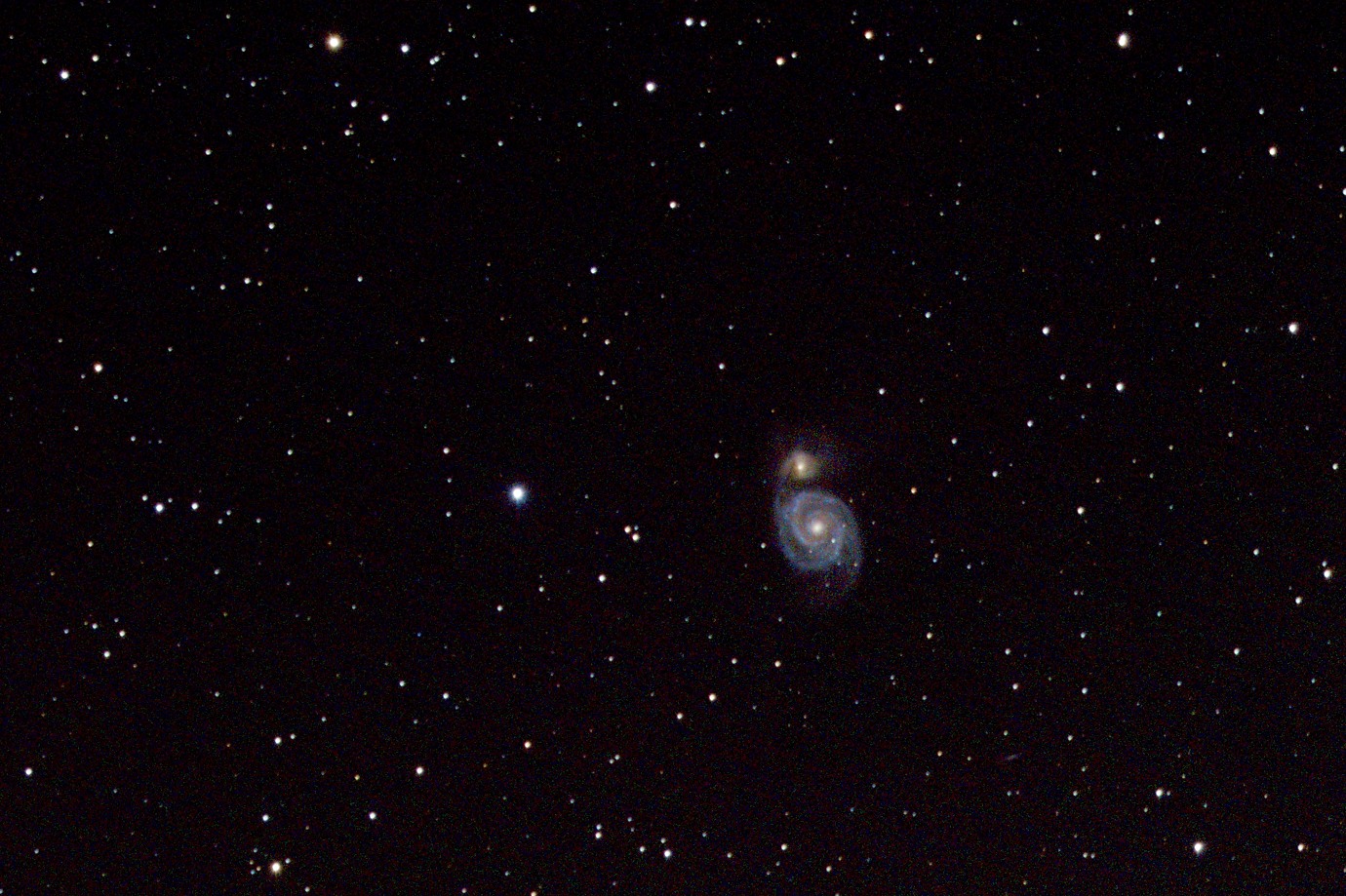
M 51 with AFS 300mm f/4 E PF @ f/4.5 on Skytracker, 60 sec exposures @ ISO 1600, ca 30 usable.
Aurora burying the target.
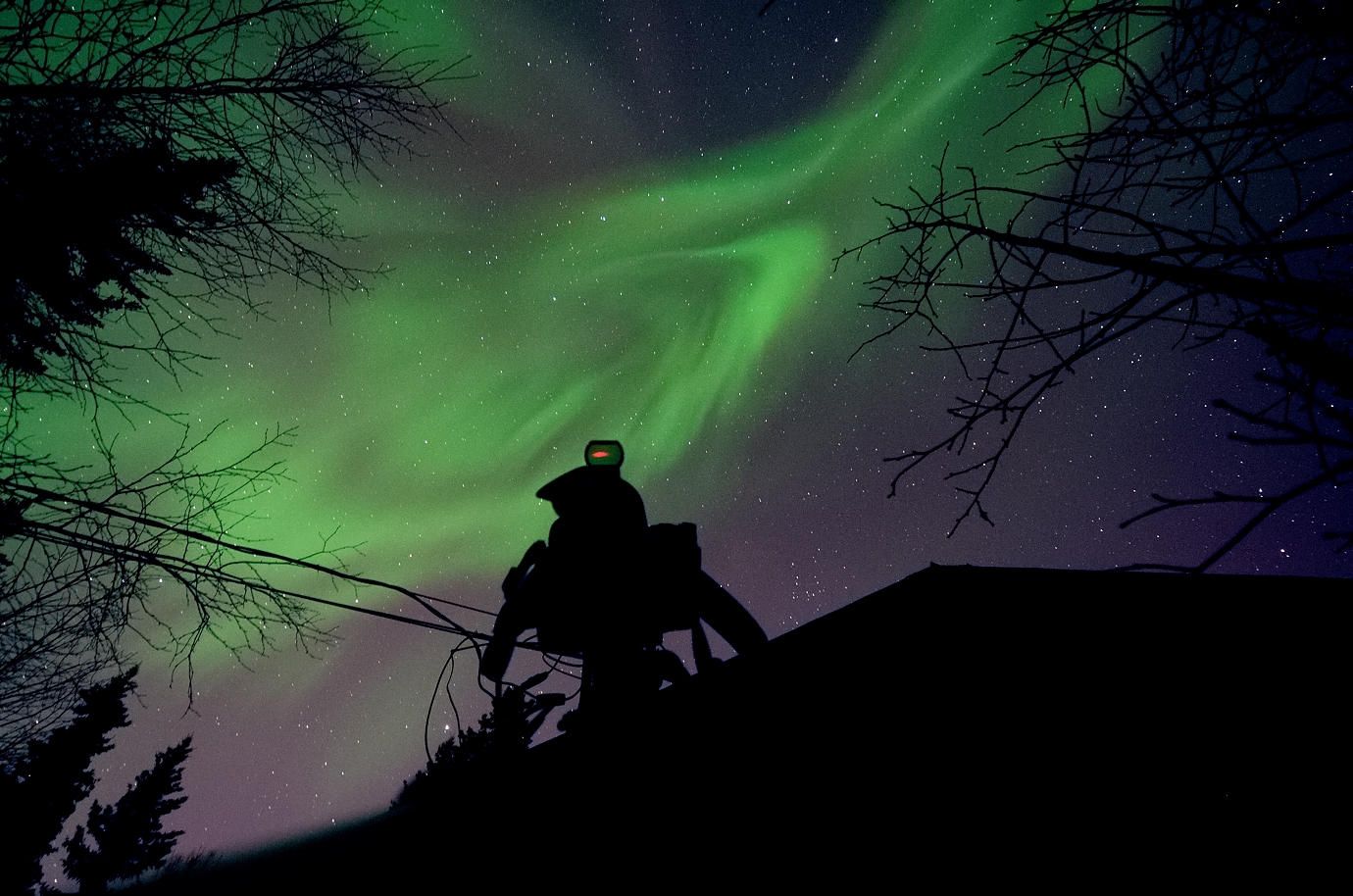
Another elusive targets are nebulas radiating in the hydrogen alpha range. Typically, converted cameras are used for these, but it is still possible to get to it with a standard body if the sky is dark enough... As a physiologist I had to make an attempt at the Heart Nebula - in the light polluted red zone..., targeting got a bit off so I only got the atrium and the very top of the ventricles in bottom half of the frame; aurora lingers at the very bottom of the frame. I believe the "aorta" is the red spot to bottom right. I kept it mostly because of the stars.
As a side note, while capturing exposures for this over 80 minutes I heard telltale sounds of a moose browsing out in the dark and moving at regular intervals. Soon I could see a dark shadow 40 meters away, and I envisioned the moose trampling down the tripod with Skytracker and my dear 300PF. So I for much of the time I kept close to it in case of need for an emergency evacuation, which may have disturbed the tripod and caused less successful tracking than normal (I usually keep a good distance to the tripod).
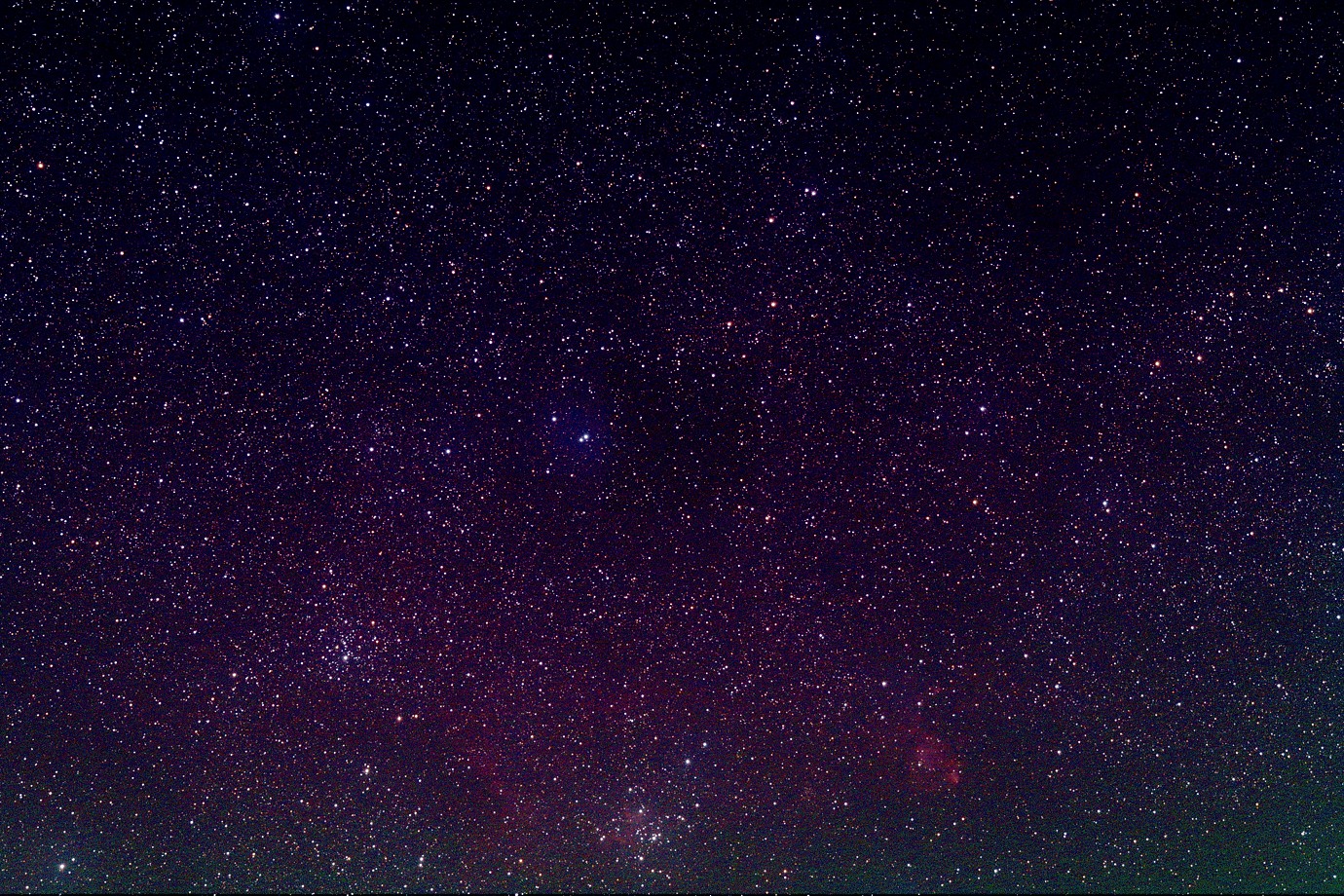
AFS 300mm f/4 E PF @ f/4.5 on Skytracker, 60s exposures, ca. 25 used.
Again Aurora took over...
I have started to experiment with treating aurora images the same way as the star images: Rather than changing white balance I subtract light pollution, and in this case some overly green cast, with a levels step (adjusting each channel separately) in CNX2. This seems to preserve more natural background star colors.
